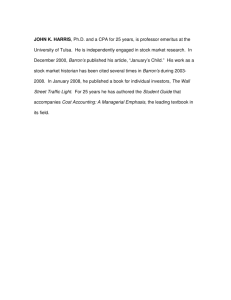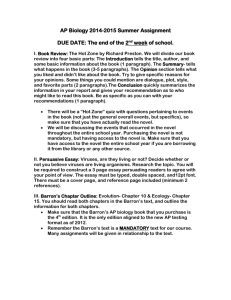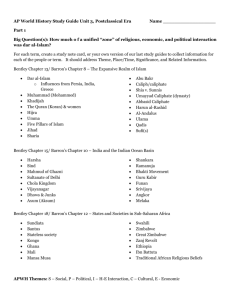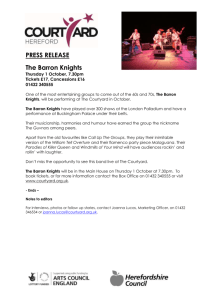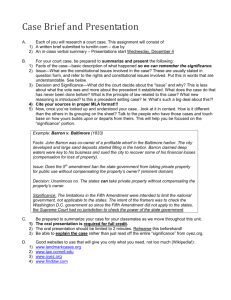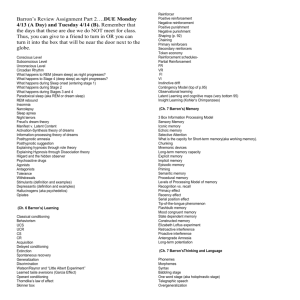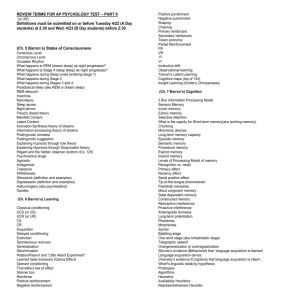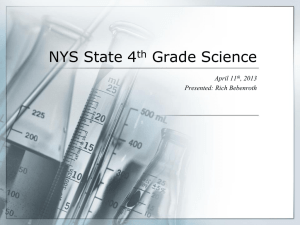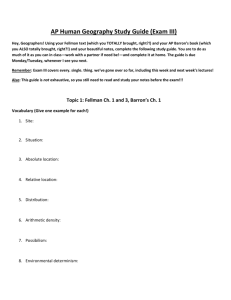Week 3 Unit 2 Methods and Stats / Week 1 Unit 3: Neuropsychology
advertisement
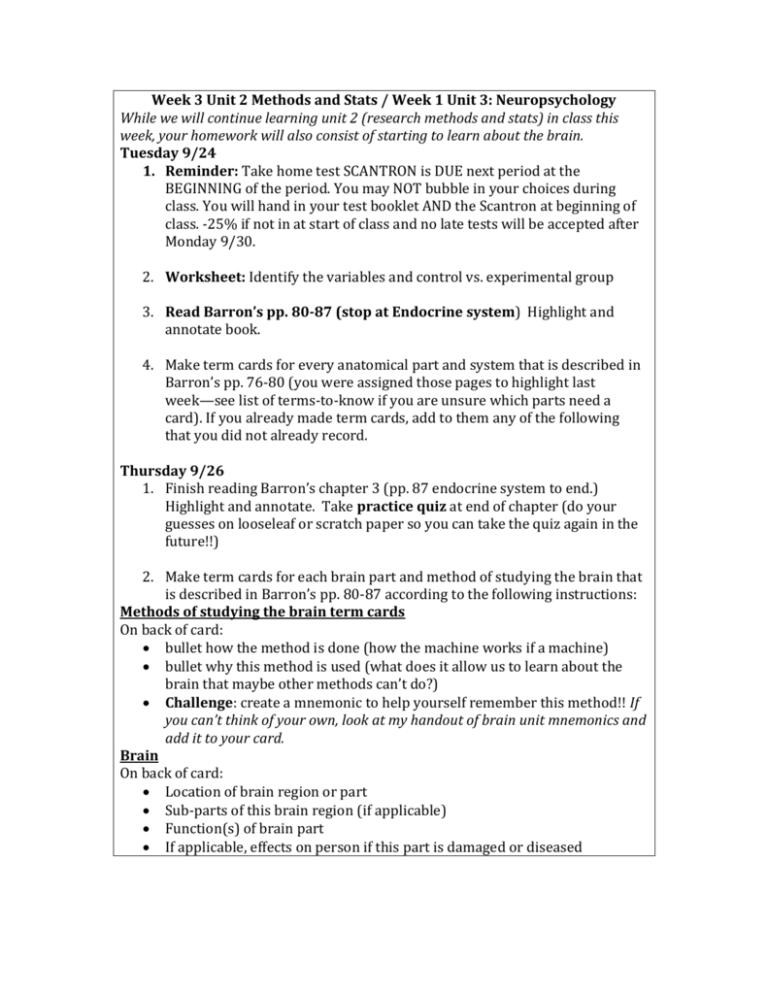
Week 3 Unit 2 Methods and Stats / Week 1 Unit 3: Neuropsychology While we will continue learning unit 2 (research methods and stats) in class this week, your homework will also consist of starting to learn about the brain. Tuesday 9/24 1. Reminder: Take home test SCANTRON is DUE next period at the BEGINNING of the period. You may NOT bubble in your choices during class. You will hand in your test booklet AND the Scantron at beginning of class. -25% if not in at start of class and no late tests will be accepted after Monday 9/30. 2. Worksheet: Identify the variables and control vs. experimental group 3. Read Barron’s pp. 80-87 (stop at Endocrine system) Highlight and annotate book. 4. Make term cards for every anatomical part and system that is described in Barron’s pp. 76-80 (you were assigned those pages to highlight last week—see list of terms-to-know if you are unsure which parts need a card). If you already made term cards, add to them any of the following that you did not already record. Thursday 9/26 1. Finish reading Barron’s chapter 3 (pp. 87 endocrine system to end.) Highlight and annotate. Take practice quiz at end of chapter (do your guesses on looseleaf or scratch paper so you can take the quiz again in the future!!) 2. Make term cards for each brain part and method of studying the brain that is described in Barron’s pp. 80-87 according to the following instructions: Methods of studying the brain term cards On back of card: bullet how the method is done (how the machine works if a machine) bullet why this method is used (what does it allow us to learn about the brain that maybe other methods can’t do?) Challenge: create a mnemonic to help yourself remember this method!! If you can’t think of your own, look at my handout of brain unit mnemonics and add it to your card. Brain On back of card: Location of brain region or part Sub-parts of this brain region (if applicable) Function(s) of brain part If applicable, effects on person if this part is damaged or diseased Challenge: create a mnemonic to help yourself remember this method!! If you can’t think of your own, look at my handout of brain unit mnemonics and add it to your card. Unit 3: Week 1 Brain and body (neuropsychology AKA biopsychology) Week of September 30-October 4 HW Monday 9/30/13 Mod 5 pp. 64-71. You may continue to take 3-column color coded Cornell notes (meaning the notes are optional) in addition to the following required work: 1. Add information to your diagrams packet about any of the regions/parts that are described in pp. 67-71. Pay particular attention to and note experiments or studies that reveal functions of the parts or results of stimulation or lesion/damage. Remember to use your color coding! 2. Make flashcards about why and how scientists lesion and stimulate or perform psychosurgery on regions of the brain. 3. As you read about EEGs and neuroimaging techniques (pp. 65-66), check your flashcards that you should have already made after reading Barron’s and make sure you have the key information about how the machines work and what they are best for written down (obviously if you did not yet make those cards, do so now following instructions from last week’s hw sheet.) 4. Continue to plan and/or begin your group research project. Formal presentation is due Wed. 10/16. Wed. 10/2 Myers pp. 71-85. 1. Take 3-column notes for these pages because there is a lot of information that does not have a direct place on your diagrams packet. Be sure to take notes about the following: a. Cerebral cortex b. Glial cells c. Neural prosthetics d. Association areas e. Aphasia (different kinds) f. Plasticity g. Split brain patients (Gazzaniga’s studies and what they reveal about brain lateralization and role of corpus callosum) 2. Add information to your diagrams packet about: o the lobes of the cerebrum o language areas (pp. 77-79) o corpus callosum o brain lateralization Friday 10/4 Myers pp. 49-56 Take 3-column color coded notes. Make term cards for any of the terms that you did not already make cards after you read Barron’s that pertain to neurons, neural transmission, and neurotransmitters.
